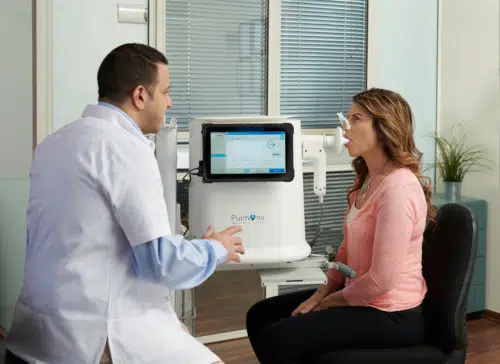
Allergy Shots
Allergy shots are administered on a regular basis exposing the body to a little amount of an allergen to establish immunity.
learn moreFeatured in Texas Monthly as a "Texas Rising Star" Read More
Allergy & Asthma Clinic of West Texas has a Board-Certified Allergist closer than you think. Request an appointment today to get relief from allergies and asthma – and get back to living!
(806) 799-4192Complete the form provided to schedule an appointment today.

Looking for a local asthma or allergy specialist near you? Our board-certified doctors understand unique allergy and asthma issues affecting those in and around Lubbock. Call us today to schedule an appointment and start feeling your best!

Allergy Shots
Allergy shots are administered on a regular basis exposing the body to a little amount of an allergen to establish immunity.
learn more
Blood Testing for Allergies
Blood tests can tell if someone has allergies by finding antibodies in the blood that react to allergens.
learn more
Food Allergy Treatment
Find freedom from the fear of food allergies with specialized food allergy treatment options.
learn more
Pulmonary Function Tests
These tests help your provider diagnose and monitor asthma symptoms by measuring your overall lung health.
learn more
Our goal is to provide individualized, state-of-the-art healthcare to patients and their families with asthma and allergic disease. We care for patients with asthma, rhinitis (hay fever symptoms), allergic conjunctivitis (allergy eyes), chronic ear infections, sinus infections, eczema, hives, food allergies, and insect allergies.
We share a common vision of helping our patients of this community enjoy longer, healthier and more productive lives. To meet the needs of all our patients, we offer well visits, sick visits, allergy testing and much more!
Address:
3502 22nd Street
Lubbock, TX 79410
Phone: (806) 799-4192
Fax: (806) 799-6299
Billing: (855) 212-0315
Hours of Operation:
Monday: 8:00 AM – 5:00 PM
Tuesday: 8:00 AM – 6:00 PM
Wednesday: 8:00 AM – 5:00 PM
Thursday: 8:00 AM – 5:00 PM
Friday: 8:00 AM – 1:00 PM
Closed Saturday & Sunday
Address:
10607 Quaker Ave., Suite 102
Lubbock, TX 79424
Phone: (806) 799-4192
Fax: (806) 799-6299
Billing: (855) 212-0315
Hours of Operation:
Monday: 8:00 AM – 5:00 PM
Tuesday: 8:00 AM – 6:00 PM
Wednesday: 8:00 AM – 5:00 PM
Thursday: 8:00 AM – 5:00 PM
Friday: 8:00 AM – 1:00 PM
Closed Saturday & Sunday
Last allergy shot injection is 30 minutes before closing.
We are dedicated to improving quality of life, helping each patient that walks through their doors get back to enjoying the activities that make them happy — without worrying about allergies standing in their way.
Make an Appointment